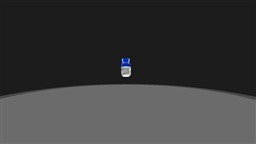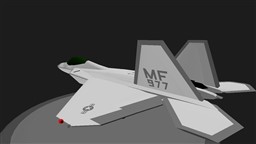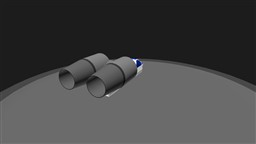2,830 KevPlayzz
Player Biography
H
e
l
l
o
its me kevin
Favorite things: fighter jets,cars(mainly drift cars),bikes
i post almost daily even tho i have nothing in mind to post
my fav plane: Sukhoi Su-57
my fav car:Koenigsegg Jesko Absolut
my fav bike:Kawasaki Ninja H2R
my fav season: SUMMER WOO ICECORIMO(icecream)
my fav week day: saturday
my fav meme:english or spanish
About The Sukhoi Su-57
The Sukhoi Su-57, also known by its Russian designation T-50 and its NATO reporting name Felon, is a fifth-generation, stealth, multirole fighter aircraft developed by Russia's Sukhoi Company. It is designed for air superiority and attack missions, featuring advanced avionics, radar, and stealth technology. The Su-57 has supercruise capability, allowing it to sustain supersonic flight without using afterburners. It employs advanced composite materials and radar-absorbent coatings to reduce its radar cross-section, enhancing its stealth characteristics. Additionally, the Su-57 is equipped with advanced electronic warfare systems and can carry a variety of air-to-air and air-to-ground weapons, making it a highly capable and versatile fighter jet.
About the Koenigsegg Jesko Absolut
The Koenigsegg Jesko Absolut is an ultra-high-performance hypercar produced by the Swedish manufacturer Koenigsegg. It's an evolution of the Jesko model, named after Jesko von Koenigsegg, the father of the company's founder, Christian von Koenigsegg. The Jesko Absolut is designed for extreme speed and performance, featuring a lightweight carbon fiber construction, advanced aerodynamics, and a powerful twin-turbocharged V8 engine capable of producing over 1,600 horsepower. It's engineered to achieve extraordinary top speeds, with Koenigsegg claiming a theoretical top speed of around 330 mph (531 km/h). The Jesko Absolut is a limited-production hypercar, with only a handful being manufactured, making it highly exclusive and sought after by automotive enthusiasts and collectors.
About the Suzuki Hayabusa
The Suzuki Hayabusa, also known as the GSX1300R, is a high-performance sportbike produced by the Japanese manufacturer Suzuki. It was first introduced in 1999 and quickly gained fame for its exceptional speed and powerful engine. The name "Hayabusa" is Japanese for the Peregrine Falcon, known for its incredible speed in hunting prey. The Hayabusa is powered by a liquid-cooled, inline-four engine with a displacement of 1,340cc, producing impressive horsepower and torque figures. It features a sleek and aerodynamic design, making it capable of achieving high speeds while maintaining stability. Over the years, the Hayabusa has undergone several updates and revisions to improve its performance and refine its features. It has earned a dedicated following among motorcycle enthusiasts and is often regarded as one of the fastest bikes ever made.
About the f22 raptor
The F-22 Raptor is a fifth-generation stealth air superiority fighter developed by Lockheed Martin for the United States Air Force (USAF). It is renowned for its combination of stealth, speed, agility, and situational awareness, along with its advanced avionics, making it one of the most capable combat aircraft in the world.
Key Features:
Stealth Capabilities: The F-22's design minimizes radar cross-section, allowing it to evade detection by enemy radar systems. This is a crucial feature for achieving air superiority.
Speed and Agility: The Raptor can supercruise, meaning it can fly at supersonic speeds without using afterburners. It has a top speed of around Mach 2.25 and is highly maneuverable due to its thrust vectoring nozzles, which allow for extreme agility in dogfights.
Advanced Avionics: The F-22 is equipped with cutting-edge radar and sensor systems, including the AN/APG-77 radar, which offers superior detection and tracking capabilities. It also has sophisticated electronic warfare systems and data-link capabilities.
Weaponry: The Raptor is armed with a variety of air-to-air and air-to-ground weapons. Its primary role is air superiority, so it typically carries six AIM-120 AMRAAM missiles and two AIM-9 Sidewinders in its internal bays. It can also be equipped with bombs for ground attack missions.
Situational Awareness: The F-22 provides pilots with exceptional situational awareness due to its advanced sensors and data fusion capabilities. This allows pilots to detect, track, and engage multiple targets simultaneously.
Operational History:
The F-22 entered service with the USAF in 2005 and has since been a key component of the U.S. military's air dominance strategy. It has been deployed in various operations, primarily in a deterrent role, as its capabilities have often discouraged adversaries from engaging in direct combat.
Production and Cost:
The production of the F-22 was limited, with only 195 aircraft built, of which 187 were operational. Production was halted in 2011, partly due to high costs—each aircraft cost around $150 million (flyaway cost) and over $400 million including research, development, and testing expenses. Additionally, the USAF shifted focus towards developing the F-35 Lightning II, a more versatile, multirole fighter.
Legacy:
Despite its limited production, the F-22 Raptor remains one of the most advanced and formidable fighters in the world. Its cutting-edge technology and performance set the standard for future generations of fighter aircraft. However, the limited number of F-22s has led to discussions about maintaining and upgrading the fleet to ensure its effectiveness in future conflicts.
About the f16 falcon/viper
The F-16 Fighting Falcon is a highly versatile, single-engine, multirole fighter aircraft originally developed by General Dynamics (now Lockheed Martin) for the United States Air Force (USAF). It has become one of the most widely used fighter aircraft in the world due to its performance, affordability, and adaptability.
Key Features:
Multirole Capability: The F-16 was designed to perform a variety of missions, including air-to-air combat, air-to-ground attacks, and reconnaissance. Its flexibility makes it a valuable asset in many different combat scenarios.
Agility and Speed: The F-16 is known for its exceptional maneuverability and agility. It can reach speeds of over Mach 2 and has a high thrust-to-weight ratio, allowing it to perform complex aerial maneuvers with ease.
Advanced Avionics: The aircraft is equipped with sophisticated avionics systems, including the APG-68 radar, which provides long-range detection and tracking capabilities. The cockpit features a heads-up display (HUD), multifunction displays, and a hands-on throttle and stick (HOTAS) control system, giving pilots greater control and situational awareness.
Fly-by-Wire Control System: The F-16 was one of the first aircraft to use a fly-by-wire control system, where the pilot's inputs are interpreted by computers that adjust the control surfaces. This system improves stability and responsiveness, making the aircraft more agile.
Weapons and Armament: The F-16 can carry a wide range of air-to-air and air-to-ground munitions, including AIM-9 Sidewinder and AIM-120 AMRAAM missiles, bombs, rockets, and a 20mm M61 Vulcan cannon. Its flexibility in weapon loadout allows it to be tailored for specific mission requirements.
Operational History:
Service: The F-16 first entered service in 1978 and has since been used by the USAF and over 25 other countries worldwide. It has seen extensive combat use in various conflicts, including the Gulf War, the Kosovo War, and operations in Afghanistan and Iraq.
Combat Record: The F-16 has an impressive combat record, with high kill ratios in air-to-air combat and successful precision strikes in air-to-ground missions.
Production and Variants:
Widespread Production: Over 4,600 F-16s have been produced, making it one of the most widely manufactured fighter aircraft in history.
Variants: There are many variants of the F-16, including the F-16A/B (original models), F-16C/D (upgraded models with improved avionics and capabilities), and specialized versions like the F-16I (used by Israel) and F-16V (Viper), which includes the latest avionics and radar upgrades.
Legacy and Future:
Longevity: Despite being in service for over four decades, the F-16 remains a highly effective aircraft due to continuous upgrades and modernization programs.
Global Impact: The F-16 has had a significant impact on global air forces, serving as a backbone for many countries' air defense capabilities.
Modernization: The F-16 continues to be upgraded with advanced technology, such as the AESA radar, modern avionics, and improved weapons systems, ensuring it remains a competitive platform well into the future.
The F-16’s combination of speed, agility, and versatility, along with its widespread adoption, has made it one of the most successful fighter aircraft in history. It continues to play a crucial role in many air forces around the world.
About the f18 super hornet
The F/A-18 Super Hornet is a twin-engine, multirole fighter aircraft developed by McDonnell Douglas (now Boeing) for the United States Navy. It is an evolution of the earlier F/A-18 Hornet, with significant upgrades in size, range, payload, and avionics. The Super Hornet is designed to perform both air-to-air and air-to-ground missions, making it a highly versatile and reliable aircraft.
Key Features:
Multirole Capability: The F/A-18 Super Hornet is capable of performing a wide range of missions, including air superiority, ground attack, reconnaissance, and electronic warfare. This versatility makes it the backbone of the U.S. Navy’s carrier air wing.
Design Enhancements: Compared to the original Hornet, the Super Hornet is about 20% larger, with a longer airframe, more fuel capacity, and additional hardpoints for carrying weapons and external fuel tanks. Despite its larger size, it maintains a similar overall design to the original Hornet, allowing for easier integration into existing carrier operations.
Advanced Avionics: The Super Hornet is equipped with state-of-the-art avionics, including the AN/APG-79 Active Electronically Scanned Array (AESA) radar, which provides superior target detection, tracking, and engagement capabilities. The aircraft also features advanced electronic warfare systems, GPS navigation, and data-link capabilities.
Weapons and Armament: The Super Hornet can carry a wide variety of weapons on its 11 hardpoints, including AIM-9 Sidewinder and AIM-120 AMRAAM air-to-air missiles, JDAM (Joint Direct Attack Munition) bombs, AGM-88 HARM anti-radiation missiles, and more. It also has a 20mm M61 Vulcan cannon for close-range combat.
Carrier-Based Operations: Designed specifically for the rigors of carrier operations, the Super Hornet features a strengthened airframe, reinforced landing gear, and folding wings to accommodate the limited space on aircraft carriers. It also has an arrestor hook for landing on carrier decks.
Two Variants:
F/A-18E Super Hornet: Single-seat variant used primarily for air superiority and strike missions.
F/A-18F Super Hornet: Two-seat variant, often used for complex missions requiring a weapons systems officer (WSO) in addition to the pilot.
Low Observability: While not a stealth aircraft, the Super Hornet incorporates some design features to reduce its radar cross-section, making it less detectable than earlier aircraft.
Operational History:
Service Entry: The F/A-18 Super Hornet entered service with the U.S. Navy in 1999, replacing older aircraft such as the F-14 Tomcat and earlier versions of the F/A-18 Hornet.
Combat Use: The Super Hornet has been used extensively in various military operations, including the wars in Iraq and Afghanistan, and has proven itself in both air-to-air combat and precision strike roles.
Carrier Deployments: The aircraft is a key component of the U.S. Navy's carrier air wings, providing essential air support, defense, and strike capabilities for carrier groups deployed around the world.
Production and Future:
Production: Over 600 Super Hornets have been built, and the aircraft continues to be produced and upgraded. It has been exported to several countries, including Australia, where it serves with the Royal Australian Air Force.
Upgrades: The Super Hornet is continuously upgraded to remain effective in modern combat environments. The Block III Super Hornet, introduced in recent years, includes advanced features like improved stealth characteristics, enhanced avionics, an advanced cockpit system, and increased fuel capacity.
Legacy:
The F/A-18 Super Hornet is a key component of the U.S. Navy’s air power and is expected to remain in service for decades to come. Its combination of versatility, reliability, and advanced technology ensures that it can meet the demands of modern naval warfare. With ongoing upgrades and the introduction of the Block III variant, the Super Hornet will continue to play a vital role in carrier-based operations, complementing newer aircraft like the F-35C.
.
.
.
.
.
.
.
.
.
.
.
.
.
.
.
.
.
.
.
.
.
.
.
.
.
.
.
.
.
.
.
.
.
.
.
.
.
.
.
.
.
.
.
.
.
.
.
.
.
.
.
.
.
.
.
.
.
.
.
.
.
.
.
.
.
.
.
.
.
.
.
.
.
.
..
.
.
.
.
.
.
.
.
.
.
.
.
.
.
.
.
.
.
.
.
.
.
.
.
.
.
.
.
.
.
.
.
.
.
- There's nothing down here...........*
.
.
.
.
.
.
.
.
.
.
.
.
.
.
.
.
.
.
.
.
.
.
.
.
.
.
.
.
.
.
.
.
.
.
.
.
.
.
.
.
..
.
.
.
.
.
.
.
.
.
.
.
.
.
.
.
.
.
.
.
.
.
.
.
Seriously ?.........
.
.
.
.
.
.
.
.
.
.
.
.
.
.
.
.
.
.
.
.
.
.
.
.
.
.
.
.
.
.
.
Still nothing.........
.
.
.
.
.
.
.
.
.
.
.
.
.
.
.
.
.
.
.
.
.
.
.
.
Stop scrolling......
.
.
.
.
.
.
.
.
.
.
.
.
.
.
.
.
.
.
.
.
.
.
.
.
.
.
.
.
.
.
.
.
.
.
.
.
why are you doing this ?
.
.
.
.
.
.
.
.
.
.
.
.
.
.
.
.
.
.
.
.
.
.
.
.
.
.
.
.
.
.
.
.
.
.
.
.
.
.
.
.
.
.
.
.
.
.
.
.
..
Please stop ?
.
.
.
.
.
.
.
.
.
.
.
.
.
.
.
.
.
.
.
.
.
.
.
.
.
.
.
.
.
.
.
.
.
.
.
..
.
.
.
.
.
.###You're only hurting yourself at this point..............
.
.
.
.
.
.
.
.
.
.
.
.
.
.
.
.
.
.
.
.
.
.
.
.
.
.
.
.
.
.
.
.
.
.
.
.
.
.
.
.
.
.
.
.
.
.
.
.
.
.
.
.
.
.
.
.
.
.
.
.
.
.
.
.
.
.
.
.
.
.
What do you get if you keep scrolling?
.
.
.
.
.
.
.
.
.
.
.
.
.
.
.
.
.
.
.
.
.
.
.
.
.
.
.
.
.
.
.
.
.
.
.
.
.
.
.
.
.
.
.
.
I think you wasting your time and mine as this point
.
.
.
.
.
.
.
.
.
.
.
.
.
.
.
.
.
.
.
.
.
.
.
.
.
.
.
.
.
.
.
.
.
.
.
.
.
.
.
.
.
.
.
.
.
WOULDN'T YOU AGREE ?
.
.
.
.
.
.
.
.
.
.
.
.
.
.
.
.
.
.
.
.
.
.
.
.
.
.
.
.
.
.
.
.
.
.
.
.
.
.
.
.
.
.
.
.
.
.
.
.
.
.
.
But, I am having fun hanging out with you
.
.
.
.
.
.
.
.
.
.
.
.
.
.
.
.
.
.
.
.
.
.
.
.
.
.
.
.
.
.
.
.
.
.
.
.
.
.
.
.
.
.
.
.
.
.
.
.
.
.
.
.
.
.
.
.
.
.
.
.
.
.
.
.
.
.
.
.
.
.
.
So it's not all bad
.
.
.
.
.
.
.
.
.
.
.
.
.
.
.
.
.
.
.
.
.
.
.
.
.
.
.
.
.
.
.
.
.
.
.
.
.
.
.
.
.
.
.
.
.
.
.
.
.
.
.
.
.
.
.
.
.
.
.
.
We should hang out like this more often
.
.
.
.
.
.
.
.
.
.
.
.
.
.
.
.
.
.
.
.
.
.
.
.
.
.
.
.
.
.
.
.
.
.
.
.
.
.
.
.
.
.
.
.
.
.
.
.
.
.
.
.
.
.
.
.
.
.
.
.
.
.
.
.
.
.
.
.
.
.
.
.
.
.
.
.
.
.
.
.
.
.
You're still here huh ?
.
..
.
.
.
.
.
.
.
.
.
.
.
.
.
.
.
.
.
.
.
.
.
.
.
.
.
.
.
.
.
.
.
.
.
.
.
.
.
.
.
.
.
.
.
.
.
.
.
.
.
.
.
.
..
.
.
.
.
.
.
.
.
.
.
.
.
.
.
.
.
.
.
.
.
.
.
.
.
.
.
.
.
Do you like memes?
.
.
.
.
.
.
.
.
.
.
.
.
.
.
.
.
.
.
.
.
.
.
.
.
.
.
.
.
.
.
.
.
.
.
.
.
.
.
.
.
.
.
.
.
.
.
.
.
.
.
.
.
.
.
.
.
.
.
.
.
.
.
.
.
.
.
.
.
.
.
.
.
.
.
.
.
I like memes.......
.
.
.
.
.
.
.
.
.
.
.
.
.
.
.
.
.
.
.
.
.
.
.
.
.
.
.
.
.
.
.
.
.
.
.
.
.
.
.
.
.
.
.
.
.
.
.
.
.
.
.
.
.
.
.
.
.
.
.
.
.
.
.
.
.
.
.
.
.
.
.
.
.
.
.
.
.
.
.
.
.
.
.
.
.
.
.
.
.
.
.
.
.
.
.
.
.
.
.
.
.
.
.
.
.
.
.
.
.
.
.
.
.
.
.
.
.
.
.
.
.
.
.
.
.
.
.
.
.
.
.
Want to see a meme emoji?
.
.
.
.
.
.
.
.
.
.
.
.
.
.
.
.
.
.
.
.
.
.
.
.
.
.
.
.
.
.
.
.
.
.
.
.
.
.
.
.
.
.
.
.
.
.
.
.
.
.
.
.
.
.
.
.
.
.
.
So, Is that a "Yes" ?
.
.
.
.
.
.
.
.
.
.
.
.
.
.
.
.
.
.
.
.
.
.
.
.
.
.
.
.
.
.
.
.
.
.
.
.
.
.
.
.
.
.
.
.
.
.
.
.
.
.
.
.
.
.
.
.
.
.
.
.
.
.
.
.
.
.
.
.
.
.
.
.
.
.
.
Ok, let me see if I can find a picture of the meme for you......
.
.
.
.
.
.
.
.
.
.
.
.
.
.
.
.
.
.
.
.
.
.
.
.
.
.
.
.
.
.
.
.
.
.
.
.
.
.
.
.
.
.
.
.
.
.
.
.
.
.
.
.
.
.
.
.
.
.
I'm still looking for a picture....
.
.
.
.
.
.
.
.
.
.
.
.
.
.
.
.
.
.
.
.
.
.
.
.
.
.
.
.
.
.
.
.
.
.
.
.
.
.
.
.
.
.
.
.
.
.
.
.
.
.
.
.
Why don't you scroll for a while & I will look for a picture for you...
.
.
.
.
.
.
.
.
.
.
.
.
.
.
.
.
.
.
.
.
.
.
.
.
.
.
.
.
.
.
.
.
.
.
.
.
.
.
.
.
.
.
.
.
.
.
.
.
.
.
.
.
.
.
.
.
.
.
.
.
.
.
.
.
.
.
.
.
.
.
.
.
.
.
.
.
.
.
.
.
.
.
.
.
.
.
.
.
.
.
.
.
.
.
.
.
.
.
.
.
.
.
.
.
.
.
.
.
.
.
.
.
.
.
.
.
.
.
.
.
.
.
.
.
.
.
.
.
.
.
.
.
.
.
.
.
.
.
.
.
.
.
.
.
.
.
.
.
.
.
I'm Still looking.......
.
.
.
.
.
.
.
.
.
.
.
.
.
.
.
.
.
.
.
.
.
.
.
.
.
.
.
.
.
..
.
.
.
.
.
.
.
.
.
.
.
.
.
.
.
.
.
.
.
.
.
.
.
.
.
.
.
.
.
.
.
.
.
.
.
Or scrolling........
.
.
.
.
.
.
.
.
.
.
.
.
.
.
.
.
.
.
.
.
.
.
.
.
.
.
.
.
here it is
.
.
.
.
.
.
.
.
.
.
.
.
.
.
.
.
.
.
.
.
.
.
.
.
🤫🧏








